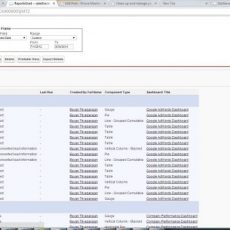Customer Experience (CX) is no longer limited to (B2C) entities. More and more (B2B) customers are looking for the same type of (B2C) experience from their vendors. As such, expectations are changing. They’re looking for online ordering, access to order information via websites, as well as proactive alerts on order status. They may not be so inclined to contact customer service or sales through traditional means any longer and look to a more “Omni” approach to doing business throughout their journey.
Manufacturers need to understand these changes in customer behavior and be able to respond. The ability to offer a better CX allows manufacturers to add value, maintain relevance, create customer loyalty, differentiate their brand(s), adjust for a new generation of customers, as well as attract and retain a new generation of employees. Manufacturers should look at four key areas when moving toward a better CX:
People
Hire, train, and mentor for CX in every position-not just sales and customer service. CX flows along the entire customer journey and all employees need to understand their roles and responsibility. Too often organizations think CX is customer service-it’s not. Customer service is an element of CX-but not everything. There are dozens of interdependencies within organizations that affect the CX and are often behind the scenes but have a direct effect on CX. Purchasing, transportation & logistics, operations, quality, human resources as well as IT-have an effect on the CX. Employees need to understand how critical their functions are to the CX. The figure below is an example of CX throughout the customer journey and the roles of various departments.
Culture
All employees- not just leaders- have a responsibility to challenge business processes and make recommendations that drive a better CX and ultimately a better business. This includes taking ownership of change and working with other groups to see the change implemented. Empowering employees to make changes and not be “afraid to fail” is key to an organization’s ability to drive a systematic change to CX. In addition, C-Suite leadership must be willing to advocate this culture throughout the organization as well as celebrate and reward successes.
Strategy
CX must be at the heart of the organization’s vision, purpose, and strategy. Some of the most successful companies have CX as their cornerstone. The CX mentality flows not just at the C-Suite but throughout the entire organization in everything they do. Yearly planning, and strategic planning all must focus on CX, with key performance indicators developed.
Technology
Technology and data are enablers of CX-not the starting point. Organizations must look inward at existing processes hindering the CX and determine if there is technology available to help resolve them. Too often organizations quickly jump to the latest technology without insight into what customer problems need to be solved. Gathering customer feedback and employee feedback, throughout the customer journey, is critical to understanding needs and where technology can plan apart.
Key elements to CX’s success
- Gain executive alignment and endorsement.
- Be willing to invest in people training, skill sets, and technology.
- Understanding CX spans the entire customer journey-not just customer service and sales.
- Make people the center point so they understand their role in CX.
- Hire, train, and onboard with a CX-centric and change the mindset.
- Empower employees to solve problems- create a “fail-safe” environment.
- Connect CX to strategy and planning efforts-company wide.
- Identify “visionary leaders”-drive 2-3-year department visions/plans.
- Be agile in approach and priority.
- Be accountable to drive change.
Pitfalls”: What to watch for:
- Pushing technology BEFORE understanding CX’s pain points-this will only lead to wasted investments under the guise of “innovation”
- Not having business processes mapped and archived. You need to baseline the customer journey and internal processes before moving forward.
- Being too “inward” focused. Often companies will congratulate themselves on internal process improvements which do not drive CX results.
- An IT lead CX movement. IT departments are great-but the business should lead the CX evolution with IT supporting any technology needs down the road.
- Not getting consistent customer feedback. Yearly surveys are great but reaching the customer near term after transactions are complete is key. This will allow CX improvements to be implemented faster without becoming “large-scale” time-consuming efforts. This will help drive brand evangelists.
- Don’t let CX issues fester-this will degrade the brand over time resulting in loss of customer loyalty.
- Ignoring employees. Employees-especially those on the front lines- are valuable sources of CX improvement ideas. Include them in the CX planning process at the start!
Please feel free to post your comments below if you have any questions or you can email me at buyan@eigenx.com for further questions.
Please subscribe
Subscribe to our mailing list and get tips to maximize salesforce to your email inbox.
I am honored to have your subscription. Stay tuned for tips to maximize your salesforce investment
Something went wrong.







